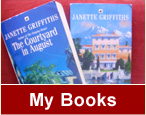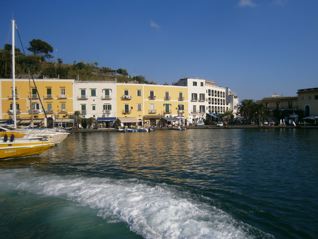|
Janette Griffiths |
|
|
Journeys
An Enduring Fondness for the Fairmont When I returned to one of Fairmont’s Vancouver hotels last week,
I got to thinking about what hotel chains represent in our minds - the worlds, even the eras in history, that they conjure
up for us: romantic and grandiose or tacky and lowlife - sometimes all it takes is a name. The Fairmont’s portfolio
contains two such properties: The Savoy in London and The Plaza in New York. Those legendary names evoke a more opulent, glamorous, romantic
era. That’s what grand hotels give us and that’s why, on a harried city day, when traffic noise, digital
displays and shop windows filled with trashy mass-produced clothes are starting to get me down, I often wander into the foyer
of a grand hotel. Like Dr Who’s Tardis but for people with a hankering for marble halls, chandeliers, sweeping
staircases, opulent bouquets and a bit of Cole Porter to accompany it all, we step into another world once we go through
their revolving doors. PRAGUE IN WINTER "Vaclav Havel used a Segway to get around the palace," my Prague guide,
Mikhail tells me. We're standing in the square in front of the vast presidential palace on a frosty morning in early December. The guard has just been changed and fur-hatted
soldiers in blue coats are marching by. There's an extra guard standing in a sentry box right in the middle of the
square not far from the glorious St Vitus Cathedral. He's been assigned the very Czech duty of guarding the Christmas
tree. I've been coming to this city on and off for almost 20 years and this wonderfully ginger-bread, fairy-tale element
is always present. I'll come back to the gingerbread element later. There's a darker side to life here. Franz Kafka lived just around the
corner from the palace on Golden Lane and he certainly didn't see much that was fairytale in this city - even though a
visitor to the narrow lane on a morning like this when the frost clings to the cobbles and gables can't help but
see a little magic. With its shadowy porticoes, elegant mansions and silent little squares,
Mala Strana is one of the most peaceful, historic parts of Prague. Czech director, Milos Forman, used it as the setting for
the 1980s Oscar winner, "Amadeus". There's a very small hint of tourist tack just before the bridge but
once on the bridge itself with the dark looming shadows of the various saints statues that parade across it, well, we're
back in pure Mitteleuropa magic. An old mill turns on one side, complete with its own bronze mill sprite, the castle looms
above and the turrets of the Old Town Bridge Tower mark the entrance to the buzzier, busier central part of the town. And
this being a few weeks before Christmas I'm headed to the Christmas market in Old Town Square in the heart of the
town. Prague's market is not that big and it focuses on food. This year it had the most opulently beautiful Christmas
tree that I have seen in years. I've been complaining over recent Christmases about the change in Christmas lights. There's
been a switch to cold, hard blue lights . But Prague has had the good sense to festoon the giant tree with warm gold-white
lights and run dozens of white icicle lights amongst them. Mikhail, however, wants to take me to a sweet little Prague Christmas secret. He describes it as Christmas
cribs and I follow him through the narrow streets without much enthusiasm. I've seen a few cribs in my time and the prospect
of gazing politely at some more does not thrill. Prague's Christmas cribs are hidden away in the basement of a church
not far from the square. The Christmas cribs turns out to be a small, cosy exhibition of delightful Czech folk art. The place
is full of locals -little benches are set up in front of displays of pottery,paintings and textiles. They are for the most
part beautiful and classy. It's one of the most truly Christmassy moments that I will spend in this city. And then there's
the gingerbread. A short bus ride from the city centre, in a residential, formerly blue-collar part of town, is the Chef Parade
cooking school where I spend a morning learning that the Czechs eat carp at Christmas and that gingerbread when made from
scratch and dipped in white chocolate bears no ressemblance to that tooth-achingly sweet, dry product on offer throughout
Europe at this time of year. Here's a pic of me making the stuff.
THE LOVELIEST CHRISTMAS MARKET
TREE Editors at major
newspapers roll their eyes whenever a freelance offers a story on a Christmas market. Another mulled wine mug to keep,
another bag of gingerbread and really, how much ink can be expended on festive candles and pine-scented pot pourri?
But I like Christmas markets. They make me feel festive and I think town centres throughout Europe have been made more
festive by their presence. Over the past couple of years, assignments have taken me to markets in Bonn, Vienna, Nuremberg,
Passau, Bratislava, Salzburg and Prague not to mention Oxford and London. So here in the final days leading up to Christmas
are a few thoughts on what I liked best and why. Nuremberg has one of the loveliest locations. The city was rebuilt in the traditional,
gabled, Hansel and Gretel- style after the ravages of WW2 and the centre of this old/new town feels, unsurprisingly, like
stepping into a set of Wagner's Meistersinger. Add a foot or so of snow as they did last year and this compact market
is cosy, bustling and very quaint. Bonn's market is massive and is right by the Rhine so perfect for a 3 day Christmas market cruise. Passau is small and sweet
and is usually found by foreign visitors when they cruise along the Danube - my all time favourite way to spend Christmas.
http://www.telegraph.co.uk/travel/cruises/8904683/A-Danube-cruise-at-Christmas-time.htmlIts near neighbour just down the Danube
is the stunningly medieaval Regensburg. Vienna has several markets - a visitor can spend a happy afternoon and evening wandering
from one to the other and supplementing their energy in one of the great Viennese cafes. The biggest market is the Christkindlmarkt
at the Town Hall. Lovely lights in the trees but very busy. My favourite is in front of Schönbrunn Palace. I once skipped
the first act of Wagner's Götterdämmerung to pop out to the palace, listen to the carol singers around the tree
and eat kartoffelpfuffer and drink mulled wine. Bratislava is located on a lovely little square in the heart of the town. It felt very local
to me, catering to local tastes for endless stalls of potato pancakes and a warm honey flavoured punch. There are excellent
free performances of local folk dances on this square and if the Mitteleuropa cold gets to be too much, try one of the 27
flavours of hot chocolate on offer in the hot chocolate cafe right on the square. Salzburg has the good grace to keep its market open on
Christmas Day. A marketing ploy, perhaps, and definitely aiming at foreign visitors but the Austrians themselves have had
their family celebration the night before so are probably also ready to venture out to the big square in front of the cathedral
where Mozart gazes down on the ice rink and where , if you are lucky, you will hear the choir sing "Silent Night"
- the carol that was composed in a village on the outskirts of the city. Prague's Christmas market is just plain lucky to have one of the most
fairy-tale city settings in all of Old Europe. The market is not that big and features more food than crafts. I thought their
Christmas tree was the loveliest I have ever seen in a Christmas market. I've posted a picture here but it doesn't
do it justice. The gorgeous white-gold sparkle of the classic Christmas lights was interwoven with fluid, running icicle white-lights.
Best of all was the backdrop of the flame-lit turrets of the Tyn Cathedral. Alas you can hardly see them in my pic. Does anyone else have thoughts on the best Christmas market tree?
Falling in Love Again -
Naples, Sorrento, Ischia..... I went to Naples last week. I'd never been before but I'd passed through the place so many times that I'd started to believe that I'd actually been there. The city itself wasn't even my destination this time around. It was, yet again, a stopping off point for those old-fashioned beauties that surround it: Ischia, Sorrento and Capri. Oh and there was a promised trip to Pompeii and up to the summit of Vesuvius. Sorrento was my first sight of an Italian resort back in the early 70s when I went on a school trip to Italy. All those decades ago, the blue-ness of the sea, the clifftop villages , the profusion of flowers, bougainvillea, morning glory, hibiscus that seemed to be lit from within by warm,vibrant Italian light, all had me believing that I'd come to the most exotic place on earth. Nowadays, there's an old-fashioned ring to those fabled names of Sorrento and Capri. They belong to corny songs and are themselves a bit middle-aged and forgotten by travellers who have moved on to more distant, exotic destinations. And yet, and yet, despite the garbage that intertwines with the vines on the highways, despite the half-finished construction sites and the buzzing din of the armies of Vespas, there is something about this region - a buoyancy in the light, the colour, the landscape that made me fall in love with it all over again. I am always happy when I am here. And I have no idea why. Crossing
America by Rail That vast endless whiteness on the left is "Fargo" country - somewhere in North Dakota, viewed from Amtrak's
Empire Builder train. I crossed America from Chicago to Seattle for The Sunday Telegraph earlier this year. In theory the
train leaves Chicago's Union Station at 2.30 pm, rumbles up through Wisconsin, crosses Minnesota during the night and
makes its way across those big empty Dakota wastelands all day, giving a first glimpse of the Montana's Rocky Mountains
in a pink dusk. (That's what the picture hoped to show. If you squint very hard you'll see a mountain off in the distance.)
However, in winter, poor Amtrak has to fight with Mother Nature to keep on schedule. The notorious Marias Pass at the
Continental Divide is often the site of delays, breakdowns and passengers being loaded on to buses to go round felled trees,
derailed freight trains. I enjoyed the slow trundle through the great stretches of white. Dozing on and off in my carriage,
when I woke up, I occasionally thought I'd landed in a Russian scene from Dr Zhivago. The two countries are more
alike than they care to acknowledge... Click
on the link below for The Sunday Telegraph feature: |
||
|
|
|
|
|
|
||







